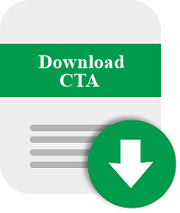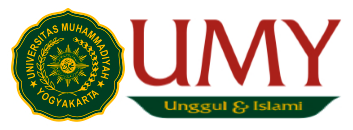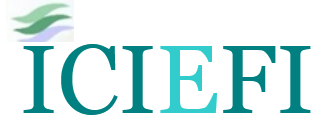Factors Determining the Successful Performance of Baitul Maal Wat Tamwil in Wonosobo
Abstract
Notwithstanding Baitul Maal wat Tamwil (BMT) has spread tremendously over the past three decades in Indonesia, some of them faced various obstacles that hamper their effectiveness and sustainability. While some of others sustained and developed well, even in the economic crisis conditions. Hence, this study aims to investigate the factors that determine the successful performance of BMT. This study is a field research with triangulation as a mixed method approach through semi-structured interviews and questionnaires. Whereby the empirical data were collected by means of conducting semi-structured interviews with 3 managers of the BMTs and administering questionnaires to 285 employees of the BMTs. This study examined five factors that influence the BMT performance, namely the capital structure of funding, the governance of the BMT, the human resource adequacy, the product innovation and the repayment of financing products. The results pointed that among the five selected factors, only three factors had positive and significant influence on the successful performance of the BMT, they are the capital structure of funding, the human resource adequacy and the product innovation. The result of this study will also assist policy makers and the BMT managers in further improving the effectiveness and sustainability of the BMT in Indonesia.
Keywords
Full Text:
PDFReferences
Adnan, M. A., Widarjono, A., & Anto, M. B. H. (2009). Study on Factors Influencing Performance of The Best Baitul Maal Wat Tamwils [BMTS] In Indonesia. Iqtisad, 4(1), 13–35. https://doi.org/10.20885/iqtisad.vol4.iss1.art2
Ahmed, H. (2002). Financing Microenterprises: An Anlytical Study of Islamic Microfinance Institutions. 9(2). Retrieved from http://www.irti.org/English/Research/Documents/IES/110.pdf
Ascarya. (2018). Baitul Maal wat Tamwil (BMT): An Integrated Islamic Social and Commercial Financial Institution in Indonesia. ISRA-Thomson Reuters IRTI Islamic Commercial Law Report 2018, 104–107. Retrieved from https://www.researchgate.net/publication/320827162_BAITUL_MAAL_WAT_TAMWIL_BMT_AN_INTEGRATED_ISLAMIC_SOCIAL_AND_COMMERCIAL_FINANCIAL_INSTITUTION_IN_INDONESIA
Bank of Khartoum. (2016). Islamic Microfinance: From a Market Niche to a growing industry. In Global Islamic Finance Report 2016 (pp. 226–258).
Bizri, R. M. (2014). A study of Islamic banks in the non-GCC MENA region: Evidence from Lebanon. International Journal of Bank Marketing, 32(2), 130–149. https://doi.org/10.1108/IJBM-04-2013-0035
Chaves, R. A., & Gonzalez-Vega, C. (1996). The design of successful rural financial intermediaries: Evidence from Indonesia. World Development, 24(1), 65–78. https://doi.org/10.1016/0305-750X(95)00114-R
Hamzah, D., Rusby, D. Z., & Hamzah, Z. (2013). Analysis Problem of Baitul Maal Wat Tamwil (BMT) Operation in Pekanbaru Indonesia Using Analytical Network Process (ANP) Approach. International Journal of Academic Research in Business and Social Sciences, 3(8), 215–228. https://doi.org/10.6007/ijarbss/v3-i8/138
Haneef, M. A., Pramanik, A. H., Mohammed, M. O., Amin, M. F. Bin, & Muhammad, A. D. (2015). Integration of waqf-Islamic microfinance model for poverty reduction: The case of Bangladesh. International Journal of Islamic and Middle Eastern Finance and ManagementManagerial Finance, 34(10). https://doi.org/10.1108/mf.2008.00934jaa.001
Hartarska, V. (2005). Governance and performance of microfinance institutions in Central and Eastern Europe and the Newly Independent States. World Development, 33(10), 1627–1643. https://doi.org/10.1016/j.worlddev.2005.06.001
Ismanto, K. (2015). Faktor-faktor Yang Mempengaruhi Eksistensi BMT/BTM di Pekalongan. Jurnal Litbang Kota Pekalongan, VOL 9(January 2015).
Karim, N., Tarazi, M., & Reille, X. (2008). Islamic Microfinance : An Emerging Market Niche. CGAP Focus Note, 49(Agustus), 1–30. https://doi.org/91682-00001 BK:10587484.3
KNKS. (2019). BAITUL MAAL WAT-TAMWIL ( BMT ): A FAITH AND COMMUNITY BASED. In Komite Nasional Keuangan Syariah. Retrieved from https://knks.go.id/storage/upload/1577610881-KNKS_Case Study_BMT.pdf
Ledgerwood, J. (2000). Microfinance Handbook: An Institutional and Financial Perspective (Sustainability Banking with the Poor) (Third). Washington, D.C: The World Bank.
Morduch, J. (1999). The microfinance promise. Journal of Economic Literature, 37(4), 1569–1614. https://doi.org/10.1257/jel.37.4.1569
Nasution, R. E. F., & Ahmed, H. (2015). Outreach and Profitability Trade-off: Does Synergy between Islamic Banking and Islamic Microfinance Institutions Matter? Indonesian Capital Market Review, 7(2), 57–73. https://doi.org/10.21002/icmr.v7i2.4853
Obaidullah, M. (2008). Role of Microfinance in Poverty Alleviation: Lessons from Experiences in Selected IDB Member Countries. https://doi.org/978-9960-32-175-2
Obaidullah, M., & Khan, T. (2008). Islamic Microfinance Development: Challenges and Initiatives. In SSRN Electronic Journal. https://doi.org/10.2139/ssrn.1506073
Pinz, A., & Helmig, B. (2015). Success Factors of Microfinance Institutions: State of the Art and Research Agenda. Voluntas, 26(2), 488–509. https://doi.org/10.1007/s11266-014-9445-2
Rahman, R. A., Al Smady, A., & Kazemian, S. (2015). Sustainability of Islamic Microfinance Institutions through Community Development. International Business Research, 8(6), 196–207. https://doi.org/10.5539/ibr.v8n6p196
Saunders, M., Lewis, P., & Thornhill, A. (2009). Research methods for business students. In International Journal of the History of Sport (Fifth, Vol. 30). https://doi.org/10.1080/09523367.2012.743996
Seibel, H. D., & Agung, W. D. (2005). Islamic Microfinance in Indonesia. Deutsche Gesellschaft Für Technische Zusammenarbeit (GTZ), (January 2005).
Sekaran, U. (2003). Research Methods for Business - A Skill Building Approach. In J. Marshall (Ed.), John Wiley & Sons (Fourth). https://doi.org/http://dx.doi.org/10.1108/17506200710779521
Visconti, R. M. (2016). Microfinance vs. traditional banking in developing countries. International Journal of Financial Innovation in Banking, 1(1/2), 43. https://doi.org/10.1504/ijfib.2016.076613
Wulandari, P., & Kassim, S. (2016). Issues and challenges in financing the poor: case of Baitul Maal Wa Tamwil in Indonesia. International Journal of Bank Marketing, 34(2), 216–234. https://doi.org/10.1108/IJBM-01-2015-0007
Zubair, M. K. (2016). Analisis Faktor-Faktor Sustainabilitas Lembaga Keuangan Mikro Syariah. IQTISHADIA Jurnal Kajian Ekonomi Dan Bisnis Islam, 9(2), 201. https://doi.org/10.21043/iqtishadia.v9i2.1728
DOI: https://doi.org/10.18196/ijief.v4i1.10484
Refbacks
- There are currently no refbacks.
Copyright (c) 2021 International Journal of Islamic Economics and Finance (IJIEF)

This work is licensed under a Creative Commons Attribution-ShareAlike 4.0 International License.
International Journal of Islamic Economics and Finance (IJIEF)
International Program for Islamic Economics and Finance
Department of Economics
Faculty of Economics and Business
Universitas Muhammadiyah Yogyakarta
Pascasarjana Building, Ground Floor
Jl. Brawijaya (Ringroad Selatan), Kasihan, Bantul
D.I. Yogyakarta 55183, INDONESIA
Official email: ijief@umy.ac.id












1.jpg)